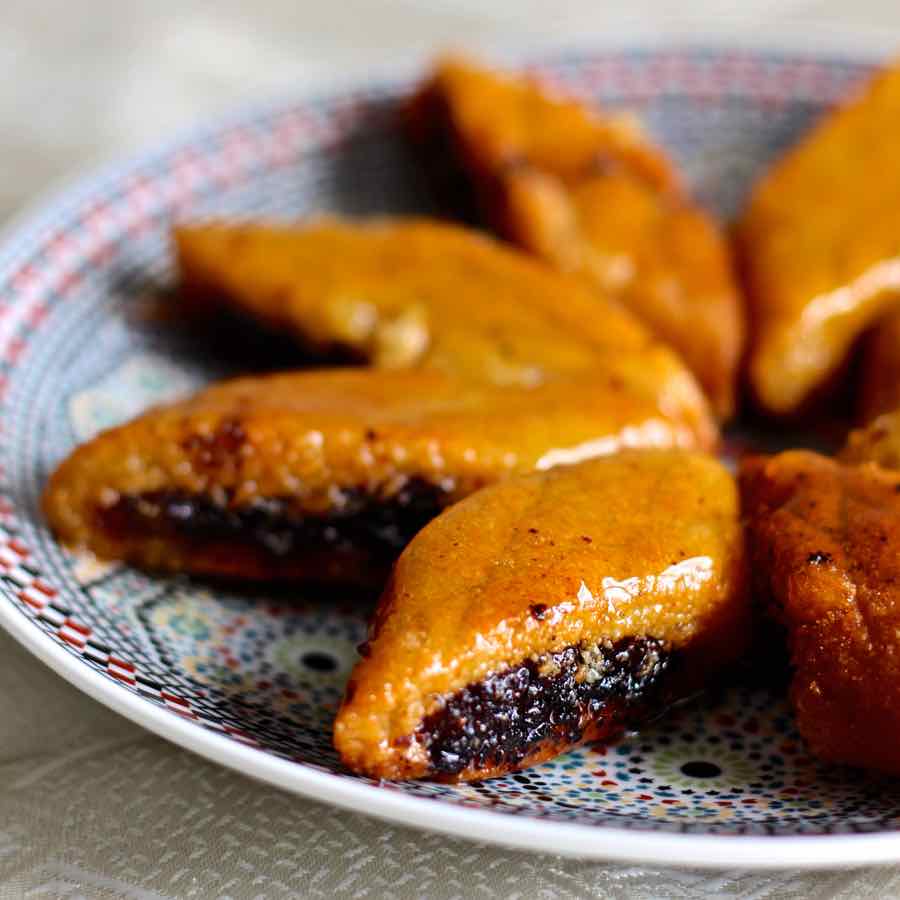
Algeria is known for its rich cultural heritage, and one of its most beloved treasures is the traditional pastry called Makroud. This delicious treat has earned a special place in the hearts of Algerians, becoming an essential part of celebrations and family gatherings. Made from semolina, filled with a spiced date paste, and drenched in fragrant honey, Makroud is the perfect combination of sweetness and crunch, embodying the culinary artistry that has been passed down through generations.
A Pastry Rooted in Tradition
The origins of Makroud can be traced back centuries, with its roots deeply embedded in North African and Andalusian culinary traditions. While Algeria shares this pastry with other Maghreb countries like Tunisia and Morocco, it is in Algeria where Makroud has truly flourished and become synonymous with hospitality and family life.
Makroud is more than just a dessert; it is a symbol of unity and tradition. For many Algerian families, the process of making Makroud is a cherished ritual that brings generations together. Grandmothers, mothers, and daughters often gather in the kitchen to prepare large batches of the pastry, sharing stories and passing down the techniques that make each tray unique. This sense of connection and continuity is as important as the delicious treat itself.
The Art of Making Makroud
Crafting Makroud requires patience, skill, and an understanding of the delicate balance of ingredients that make this pastry so special. The base of Makroud is made from semolina, a coarse wheat flour that gives the pastry its distinctive texture. The semolina dough is prepared with a touch of butter or olive oil and flavored with orange blossom water or rose water, giving it a subtle fragrance.
The filling is made from dates, a fruit that is both abundant and highly prized in Algeria. The dates are mashed into a smooth paste and mixed with cinnamon, cloves, or other spices, creating a rich, flavorful filling that complements the crisp semolina shell. Some variations of Makroud also use figs or almonds, offering different regional flavors.
Once the dough and filling are ready, the real artistry begins. The dough is rolled out, and the date paste is carefully spread inside before being folded over and shaped into diamond or rectangle pieces, a signature shape of the Makroud. These pieces are then baked until they are golden and crisp on the outside.
After baking, the final step is perhaps the most important: the honey soak. The warm Makroud pieces are dipped in honey, which not only adds sweetness but also gives the pastry its shiny, golden glaze. The honey used is often infused with orange blossom or rose water, enhancing the floral notes of the pastry. The result is a dessert that is both visually stunning and incredibly delicious.
A Staple of Celebrations
Makroud is an indispensable part of Algerian celebrations. Whether it’s a wedding, a religious holiday like Eid, or simply a family reunion, a tray of freshly made Makroud is always present on the table. The pastry symbolizes generosity and warmth, and it is often served to guests with mint tea as a gesture of hospitality.
During the holy month of Ramadan, Makroud takes on even greater significance. After a day of fasting, Algerian families often break their fast with dates, and Makroud provides a sweet and satisfying way to end the meal. Its nourishing ingredients make it a perfect post-iftar treat, combining the energy-boosting properties of dates with the richness of semolina and honey.
Regional Variations and Modern Takes
While the classic Makroud recipe is beloved throughout Algeria, there are regional variations that reflect the country’s diverse culinary landscape. In the eastern regions of Algeria, Makroud is often made with figs instead of dates, offering a tangier, fruitier filling. In the coastal areas, almonds or walnuts may be added for an extra layer of crunch.
In recent years, some bakers have experimented with modern twists on Makroud, adding new flavors like chocolate, pistachios, or coconut to the traditional recipe. These innovations have helped to introduce Makroud to a new generation, while still honoring the pastry’s roots in Algerian culture.
Despite these variations, the core elements of Makroud—the semolina, the filling, and the honey—remain the same, ensuring that each bite is a celebration of Algeria’s rich culinary heritage.
More Than a Pastry, a Cultural Icon
Makroud is more than just a delicious dessert; it is a cultural icon that represents Algeria’s deep sense of tradition, family, and hospitality. Its enduring popularity, both in Algeria and among the Algerian diaspora, is a testament to the power of food to connect people across generations and borders.
For those who have never tasted Makroud, it offers a delightful introduction to the flavors of North Africa. Its perfect balance of sweet, crunchy, and rich flavors makes it an irresistible treat for any occasion. For Algerians, however, Makroud is much more than a sweet; it is a beloved symbol of home, heritage, and the joy of coming together with loved ones.
Whether enjoyed at a family gathering or shared with guests as a symbol of hospitality, Makroud remains a timeless and treasured part of Algeria’s culinary landscape. As families continue to pass down the art of making this pastry, Makroud will no doubt remain a staple in Algerian kitchens for generations to come.
